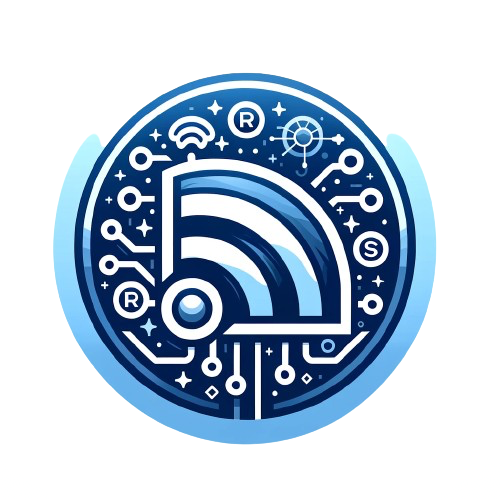Will AI Replace Teachers?
All teachers would love to enter their classrooms, and instead of spending hours preparing lesson plans, grading assignments, and answering repetitive emails, have someone else handle these tasks. Well, this is quickly becoming a reality for teachers thanks to AI. Artificial Intelligence has entered classrooms worldwide, not as a replacement for teachers but as support, helping them do their jobs more efficiently. While the idea of AI in education might be concerning to some out of fear that it will take over human roles, the truth is quite the opposite. AI isn’t here to replace teachers but to empower them if used responsibly.
AI can be the ultimate teaching assistant—it never gets tired, works 24/7, and can help with the most boring tasks so that teachers are able to focus on engaging with students, inspiring them, and helping them succeed. So, as we explore the role of AI in education, let’s see why teachers aren’t being replaced by AI but supported like never before.
5 Ways AI Is A Collaborator To Teachers
1. Handling Repetitive Tasks
Teaching involves hours of grading, planning, and repetitive tasks that take up much of a busy teacher’s schedule. This is where AI steps in to become a teacher’s best friend. Grading is time-consuming, especially with large classes. AI-powered grading tools can instantly review multiple-choice and short-answer questions, providing immediate feedback to students. This not only saves hours of work but also helps students understand their mistakes right away, rather than waiting days for their results. Some platforms even analyze patterns in student responses, showing common mistakes so teachers can adjust their lessons accordingly. Plus, there are also administrative tasks teachers have to take care of, like responding to emails, tracking student progress, and organizing schedules. AI can help with automated email responses and answering frequently asked questions about homework, deadlines, or class policies.
2. Enhancing Training Efficiency
Instead of spending hours researching and organizing materials, teachers can now use AI to do the work, leaving them more time to focus on important tasks. Plenty of AI tools out there can create lesson plans with objectives and activities tailored to different grade levels and subjects. Simply enter a topic, and these tools create a well-organized plan in seconds. Teachers can even adjust the AI-generated content to match their unique teaching style. Beyond lesson plans, AI also generates quizzes adapted to student performance, ensuring that learners get the right level of challenge. Moreover, it can create interactive videos, simulations, and even gamified content to make learning more engaging. Of course, AI-generated materials aren’t perfect. Teachers still need to review content to ensure it aligns with their learning objectives or is accurate enough to deliver.
3. Bridging Resource Gaps
In many schools, teachers manage large classrooms with limited resources, making it hard to give every student the attention they need. Thankfully, though, AI is an extra set of hands to bridge those resource gaps and support both teachers and students. For example, in a classroom with 40 students and just one teacher, it’s inevitable that some grasp concepts quickly while others need extra help. Traditionally, teachers would try to balance their time between different students. However, with AI-powered tools, each learner can get instant support without waiting for the teacher to be available. Specifically, AI tutoring systems offer real-time explanations, answer student questions, and even generate extra practice exercises based on student needs. In schools with fewer teachers or outdated materials, AI can help by generating fresh content such as videos and interactive exercises. Keep in mind that AI can’t replace the human connection, creativity, or adaptability of a teacher, but when you have limited resources, it’s a lifesaver.
4. Offering Real-Time Class Management
No more guessing which students are struggling or disengaged. With AI quietly working in the background, it’s easier than ever for teachers to track student engagement in real time and check up on those who might need extra help. Teachers now have plenty of data in their hands, and with AI-powered classroom analytics, they can analyze student performance over time, detect patterns, and have suggestions on the spot. This way, every teacher can provide targeted support before students fall too far behind. But AI isn’t just about identifying challenges—it can also improve collaboration. By analyzing strengths and weaknesses, AI can group students for peer learning, ensuring that students who complement each other’s abilities can work together, boosting teamwork, and leading them to better results.
5. Personalizing Learning
As we mentioned above, AI-powered systems can track student progress in real time, spotting patterns that teachers might not immediately notice. If a student consistently struggles with a concept, AI can take note of this and suggest adjustments so that teachers can offer more help. This is the key to personalized learning. Traditional classrooms follow a generic approach, but AI can recommend personalized learning paths based on each student’s pace and understanding. For instance, if a student is really good at a subject and moves through the courses fast, AI can suggest more challenging material to keep them engaged. Similarly, AI can also accurately spot knowledge gaps. This means that students get extra practice exactly where they need it, which is especially useful before exams.
Challenges Around AI And Human Teaching
Data Privacy
One of the first concerns with AI in education is data privacy. Many AI-powered platforms collect student data to personalize learning experiences, but this raises an important question about how secure that data is. To address this, schools should prioritize AI tools that follow strict privacy policies and comply with regulations like GDPR (in Europe) or FERPA (in the U.S.). Teachers should also be aware of the data permissions they grant to AI tools. Just because an app promises to make their job easier doesn’t mean it should have unrestricted access to student records.
Learning Curve
Some teachers can navigate AI tools with ease, while others struggle even with basic tech. The learning curve for AI adoption is a real issue, and if teachers aren’t trained properly, AI isn’t going to help them. Therefore, schools need to offer practical, hands-on training so teachers understand how to use AI without feeling overwhelmed. But this training shouldn’t just be about using the tools; it should also cover critical thinking around AI. Teachers should know how to evaluate AI-generated content, detect biases, and decide when to trust it and when to intervene.
Over-Reliance
AI can take over many tasks, but if teachers rely too much on it, they might lose their personal touch. Great teaching isn’t just about delivering content. It’s about building relationships with students and adapting lessons on the spot. AI might be able to generate a perfect lesson plan, but it can’t read facial expressions or adjust based on student emotions and engagement. So, teachers should use AI only as a tool to enhance their own creativity, not replace it.
Misinformation
One of AI’s biggest disadvantages is that it sometimes gets things wrong. AI models get their data from millions of sources, but they don’t truly understand what they generate. That means AI-created lesson materials might include outdated information, biases, or even completely false facts. That’s why fact-checking is nonnegotiable when using AI, and teachers should always review AI-generated content before delivering it.
Conclusion
At the end of the day, AI isn’t here to take over the classroom. It’s here to help. Teachers should see AI as an assistant that handles repetitive tasks so they can focus on inspiring and mentoring their students. AI is pretty efficient, great at personalization, and can provide data-driven insights, but it can’t replace the human creativity and critical thinking that teachers bring to education. The key is to use AI strategically and always have control over it.





